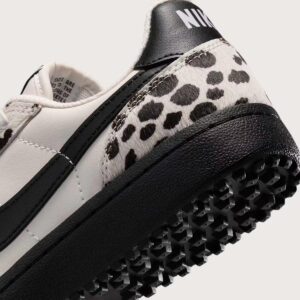In the ever-evolving orbit of skate culture and contemporary streetwear, Palace Skateboards continues to assert its unmistakable presence—not just on the pavement, but in the curated corners of our living spaces. Amid the seasonal drops and graphic-heavy tees, Palace’s home goods always generate a unique stir, reflecting a sensibility that is equal parts irreverent and refined. This year, two accessories stand out: a boldly shaped ashtray and a heart-emblazoned trinket box. Both blur the lines between function and ornamentation, utility and humor. They are not just lifestyle objects—they are cultural signifiers.
Objects with Attitude: The Palace Ethos
Since its inception in 2009, Palace has built an identity rooted in contradiction—British grime elegance meets VHS-era irreverence. While Supreme might evoke New York’s skater hustle or Stüssy conjures California’s laid-back glow, Palace is unmistakably London. Not in the stiff, monarchical sense, but in the sharp-tongued, subversive wit of Soho back alleys and Brixton sound systems.
The trinket box and ashtray reflect this ethos vividly. These aren’t minimalist designs meant to disappear into sterile interiors. Instead, they’re bold, cheeky artifacts meant to punctuate space, to provoke thought, to signal allegiance. The ashtray, shaped unabashedly like the brand’s iconic “P,” does more than cradle cigarettes—it becomes a sculptural homage to the Palace logo, an invitation to reinterpret branding as art form. For non-smokers, it’s a perfect vessel for rings, keys, or even loose change, assuming you don’t mind a dash of provocation by association.
The trinket box, meanwhile, wears its heart on its lid—literally. Inlaid with a prominent heart motif, it exudes irony and tenderness in equal measure. This is Palace in peak form: taking sentimentality and undercutting it with swagger. The heart is stylized, cartoonish even, resisting saccharine undertones. It feels more like a knowing wink than a love letter, designed to make you smirk every time you drop in your AirPods or stash your rolling papers.
Cultural Color for Domestic Corners
These items do more than sit passively on shelves—they inject cultural resonance into domestic space. To live with Palace goods is to signal a fluency in contemporary design that doesn’t take itself too seriously. In an age where home décor is often swamped in Scandinavian austerity or influencer-friendly neutrality, Palace offers resistance. It proposes rooms that breathe, laugh, and posture. Rooms with grime rhythms and ’90s skate tapes playing silently in the background. Rooms that, without even trying, feel “cool.”
That’s the secret behind Palace’s utility items: their refusal to become mere accessories. Whether or not you use them for their intended purposes is beside the point. Like Damien Hirst’s dot paintings or Duchamp’s urinal, their power lies in their presence. They interrupt expectation. An ashtray that’s as much logo sculpture as it is receptacle? That’s design with a grin. A trinket box that’s campy and endearing without being cloying? That’s postmodern warmth.
Design Language: Ironic Functionality
The design language here isn’t about minimalist silence or brutalist drama. It’s about ironic functionality. Palace leans into the absurdity of decorative objects that still manage to serve a purpose. Much like their fashion line, where outerwear might borrow from fishing jackets one minute and rave uniforms the next, their homeware revels in tension.
The ashtray, for example, is constructed to be unmistakable. Glossed ceramic reflects light like a polished badge of honor, while its exaggerated “P” shape reminds users that branding is part of the aesthetic equation. It’s aggressive in its clarity. There’s nothing discreet about it—and that’s precisely why it works.
Similarly, the trinket box’s heart motif is playfully oversized, styled like a sticker you’d see on a vintage skateboard deck. It’s the visual equivalent of a lyric hook: sticky, disarming, and a little ironic. The finish is clean but not sterile, embracing slight imperfections that underscore its human charm.
Not “Chic”—But Iki
In Japanese, there is a concept called iki (粋)—a sensibility that blends elegance, spontaneity, and subtle rebellion. It’s a cultivated style that avoids being flashy while remaining unmistakably confident. Palace doesn’t make products that aim to be “chic” in the conventional Western fashion sense. Rather, they channel iki.
That’s the right word for these objects: iki. They’re stylish without striving, smart without lecturing. They offer the kind of understated charisma that’s magnetic in a world oversaturated with performative cool. It’s not about wealth or status—it’s about attitude. And Palace has that in spades.
An Emblem of London’s Inner Swagger
The ashtray and trinket box aren’t just designed items; they’re spatial statements. They represent the unspoken swagger of London youth—a subculture steeped in irony, speed, and resourceful style. To place them in your home is to install a little piece of Soho or Hackney on your nightstand or coffee table.
And perhaps that’s the appeal. In a world of mass production, algorithmic shopping suggestions, and beige minimalism, Palace gives us something else: artifacts of attitude. These are objects for the in-the-know. They’re conversation pieces. Vessels of subcultural code. Emblems of personal taste without apology.
Flow
To call the Palace trinket box and ashtray “home goods” is to miss the point. These are not just utilities; they’re dialects of a broader cultural language. They translate skatepark mischief, Camden flair, and late-night wit into ceramic and glaze. Whether you use them or not, whether they collect ash or memories, their presence speaks volumes.
Their swag or tempo reminds us that objects can be art, branding can be self-aware, and decoration doesn’t have to be dumbed down to be tasteful. These pieces aren’t just décor—they’re declarations.
No comments yet.








